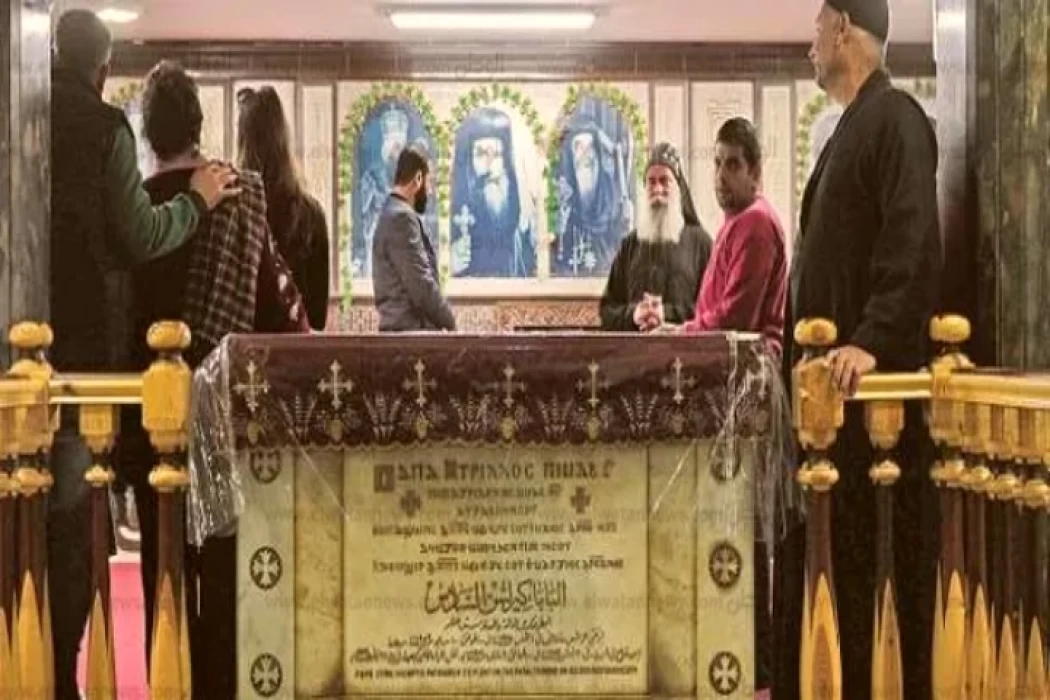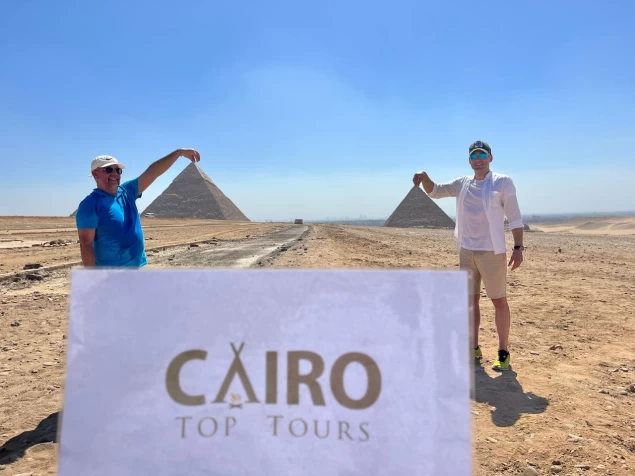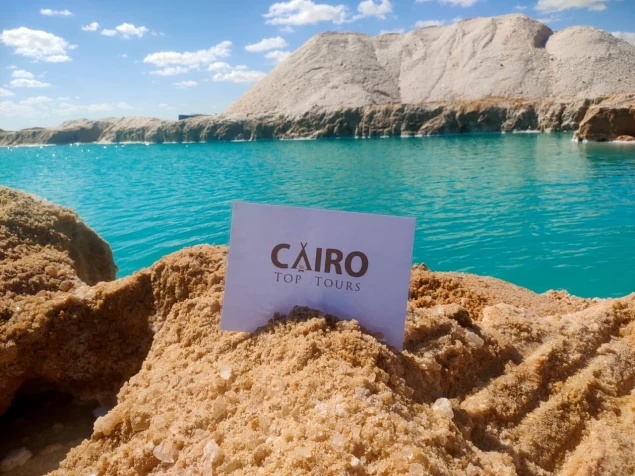
Facts about Pope Cyril (Kyrillos) VI
His life before monasticism
His pre-monastic name was Azar Yusuf Atta, and he was born on August 2, 1902, corresponding to the 2nd of Masry, 1618, to martyrs in the city of Damanhur from parents who loved the church and Christian principles. When he grew up, he liked to hide in his room and study the Bible, constantly learning more from the church's Sciences, rituals, melodies, and praise. He was like one of the tourists and was known to be a man of prayer; even if he was with people, he would pray with his heart to God.
His involvement in the monastic life
The cave of the monk Mina the recluse, during his monastic life, in the back desert of the monastery of El Baramos in Wadi el Natroun. He continued to practice monastic life before joining the monastery for more than five years, and in July 1927, Lazarus decided to enter monastic life, so he resigned his commission and went to the BrahMos monastery in the pontificate of Pope Cyril V, the 112th Pope. Lazarus remained under selection for several months, then the monks blessed him to be a monk with them, he was ordained on Amshir 17, corresponding to February 24, 1928 as the monk Mina the brahmosy, and on Sunday, July 18, 1931 he was ordained a priest as the monk Mina the brahmosy and then studied for some time at the Theological College of monks Helwan, and when he heard the news of the nomination of the pope unity, so he was allowed to fulfill his desire under the guidance of the Pious Monk Sheikh Abdul Masih Al-Masudi, so he united in a grotto an hour's walk from the monastery.
In 1947, he moved to ancient Egypt, where he built the Church of St. Marmina with the few vows he was praying, and he was doing the construction himself with the workers, and he was taught by a group of pious monks. In 1949, he attached a house to the church to accommodate expatriate students. he was famous for his constant prayer and strong faith. the sick came to him from all over the country, he prayed for them and they were all cured of their diseases.
This is the first time that age determination has been heard in the history of the Coptic Orthodox Church, says Iris Habib El-Masri: they not only determined the age, but also added the "hour of the vacancy of the chair," and the strangeness of this determination is that the Apostolic Bishop Athanasius was twenty-seven at the latest, while the two venerable popes, Bishop Cyril Amod El-Din and his immediate successor, Bishop discorus, an important figure in the Orthodox faith, was thirty-six and even Christ was thirty when he began to declare himself, and John and Mark were young. Three young people were nominated to the patriarchal see, namely Matthew the poor, Makari the Syriac, and Antonius the Syriac, to calm the thoughts of the church elders.
The monk Mina, the hermit, was chosen by lot to become the pope of Alexandria, and he was ordained on May 10, 1959, corresponding to 2 BSHS 1675 St. You can download the program booklet of the ordination ceremony of His Beatitude, the venerable Rabbi Cyril VI, Pope 116-Sunday, 2 p. s. 1675-May 10, 1959
Ordination of the jathliq patriarch of Ethiopia.
On June 28, 1959, he was ordained by Patriarch Gathlik of Ethiopia, and an agreement was concluded between the churches of Egypt and Ethiopia to confirm the bonds of love between them. In November 1959, the foundation stone was laid for the monastery of the martyr Marmina Al-ajaibi in the Mariout desert, and he returned part of his body, and built churches and a cathedral similar in glory to the ancient cathedral in the ancient city.
Historical events
1967 In January 1965, he chaired the conference of Oriental Orthodox churches in Addis Ababa, the capital of Ethiopia, which is considered the First Ecumenical Council of non-Chalcedonian Orthodox churches in modern times, and the conference discussed important issues related to service and preaching in the modern world and the relationship of the gathered churches with other churches.
He restored the Cathedral of St. Mark in Azbakeya in Cairo, which had been built for a hundred years and was decorated with beautiful drawings. In 1967, the work of the Holy Myron was an important historical event, as it was the twenty-sixth time in the history of the Coptic Orthodox Church.
On April 2, 1968, the church announced that the Virgin Mary had appeared on the domes of its church in the Zeitoun neighborhood, which attracted the attention of the whole world to Egypt and the Coptic Orthodox Church.
On June 25, 1968, Pope Cyril VI received the body of St. Mark after his absence from the land of Egypt for about eleven centuries, and deposited it in a special shrine specially built under the altars of the Coptic Orthodox Cathedral of St. Mark, which was established by Pope Cyril VI and opened in a great ceremony attended by the president of the Republic of Egypt Gamal Abdel Nasser, hailasalasi I, Emperor of Ethiopia, delegations from churches all over the world and many crowds of people.
On the morning of Wednesday, June 26, 1968, a prayer service was celebrated on the altar of the St. Mark's Cathedral, and at the end of the Mass Pope Cyril VI carried the relics of St. Mark to where he was deposited in his present shrine under the Great Temple in the east of the cathedral.
His death
On the day of his death, he received a number of his sons and at the exit of the last one he was a priest – he raised the cross and said "the Lord manages your affairs" and entered his cell and deposited his soul with the hand of God, who served him on March 9, 1971, and was buried under the altar of the cathedral he created, and on 15 Hathor 1677, corresponding to November 25, 1972, his body was transferred in a solemn ceremony to the monastery of the martyr Marmina in Marriott according to his will to be next to his patron saint Marmina.
On Thursday, June 20, 2013, the Holy Synod of the Coptic Orthodox Church met under the chairmanship of Pope Tawadros II, and the sanctity of Pope Cyril VI was recognized, 43 years after his death, and based on this decision, churches can be built on his name, in addition to the possibility of mentioning him in the Synod of Saints located in both the Holy khulaji (the book of prayers of the Divine Liturgy) and the Holy absalmodia (the book of the rosary).














